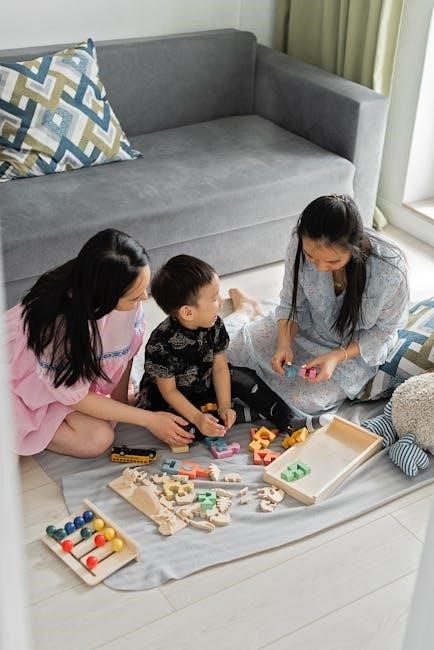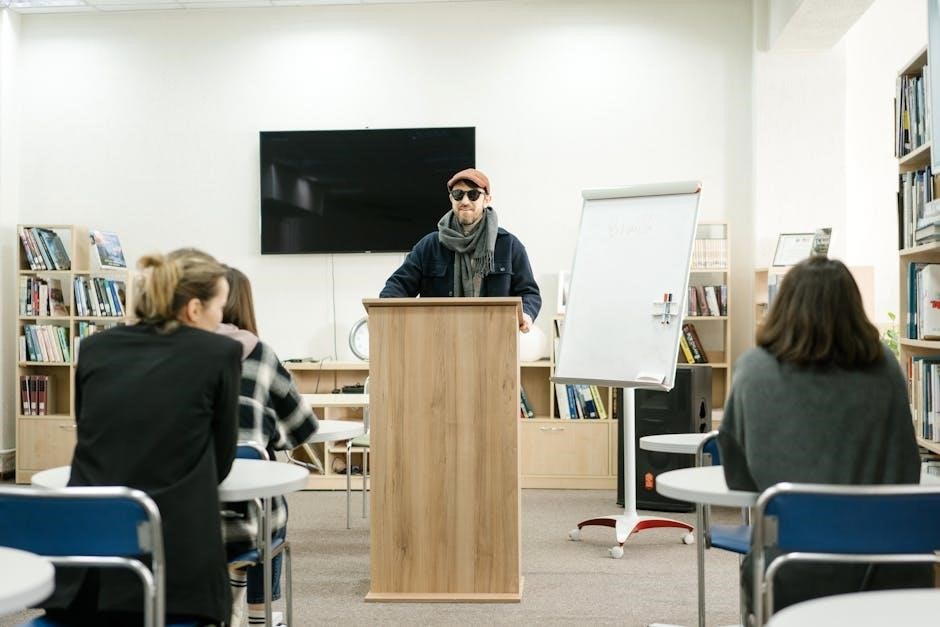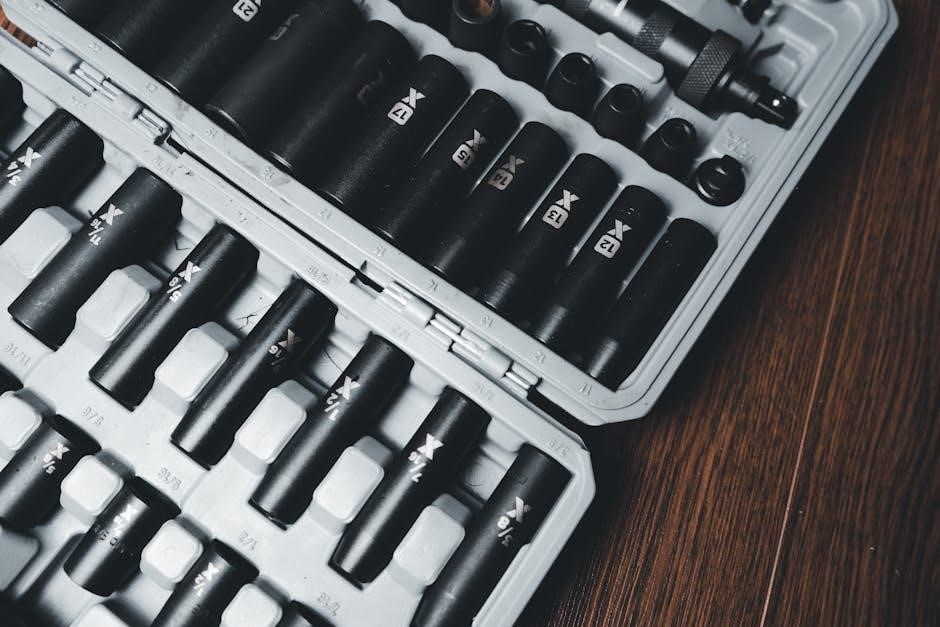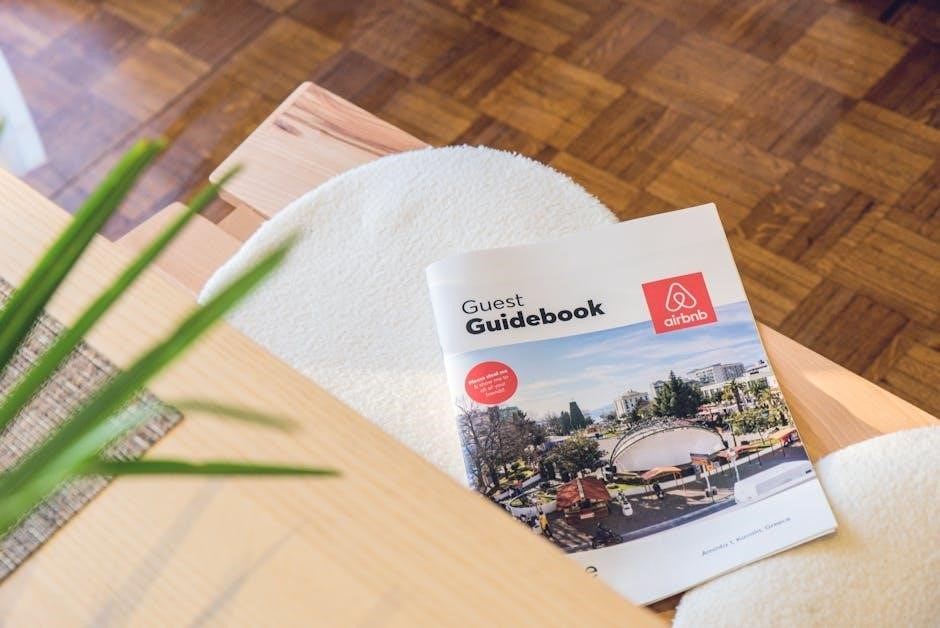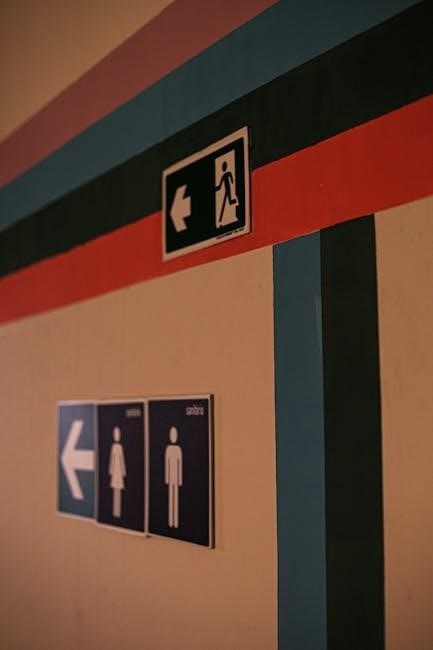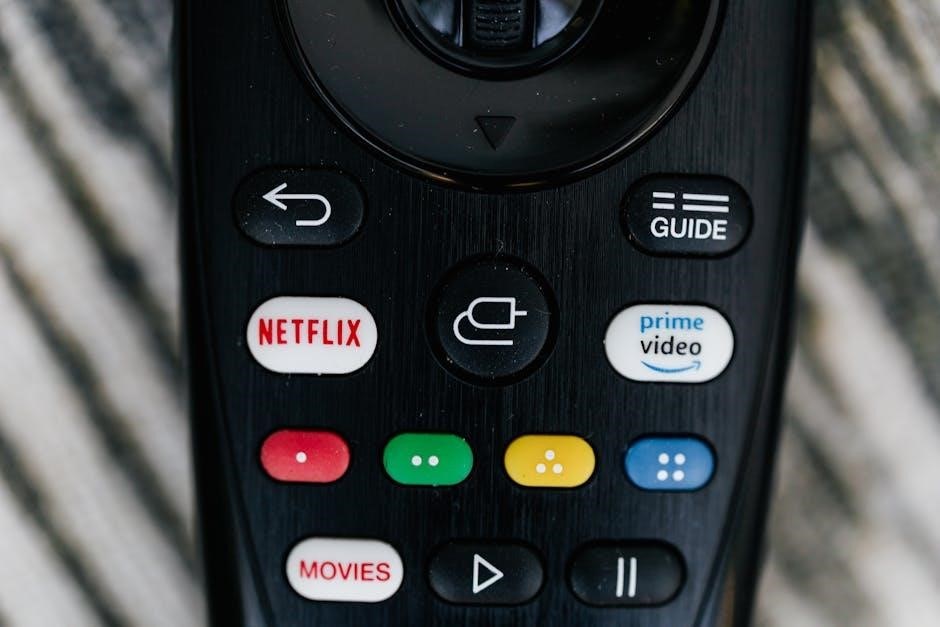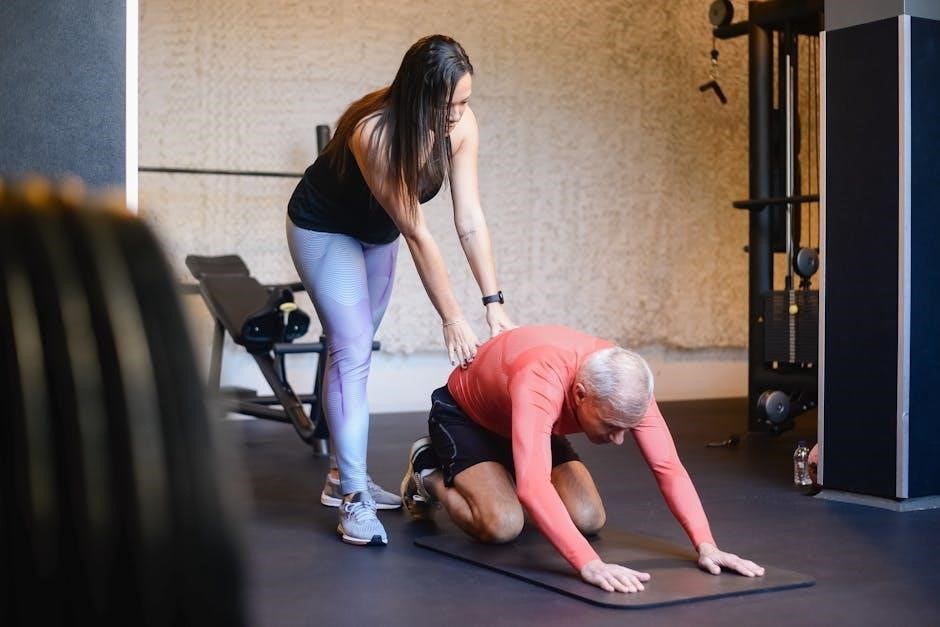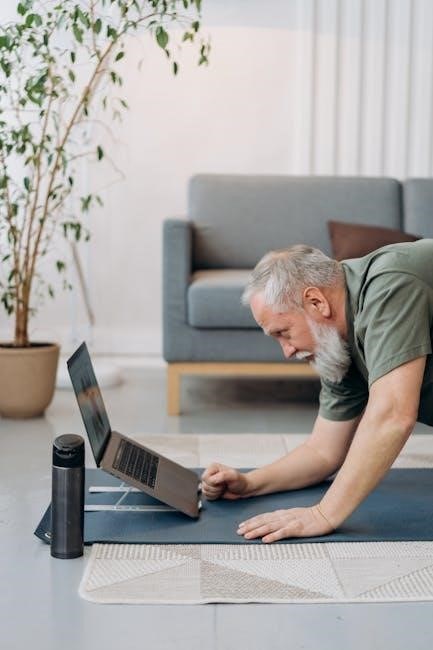surfing guide in web crossword clue
The “surfing guide in web” crossword clue refers to tools or methods aiding web navigation. It often appears in puzzles, offering 30 possible 7-letter solutions, aiding solvers effectively.
1.1 What is a Crossword Guide?
A crossword guide is a resource or tool designed to assist solvers in finding answers to crossword puzzle clues. It typically includes databases of words, definitions, and patterns to help crack even the most challenging clues. These guides can be online solvers, mobile apps, or printed materials that organize information for quick access. For the “surfing guide in web” clue, a crossword guide would provide possible answers, such as “SURFER” or “WEB,” along with their meanings. It acts as a time-saver, reducing frustration and making puzzle-solving more enjoyable. Crossword guides are especially useful for both beginners and experienced solvers, offering hints or full solutions based on the letters already filled in. They enhance the overall crossword experience by providing instant support when stuck.

1.2 Importance of Crossword Guides in Solving Puzzles
Crossword guides are invaluable for solving puzzles efficiently, especially for clues like “surfing guide in web.” They save time by quickly providing answers or hints, reducing frustration. These tools organize word lists, definitions, and patterns, making it easier to fill in blanks. Guides cater to both beginners and experienced solvers, offering support when stuck. They enhance problem-solving skills and expand vocabulary. For tricky clues, guides reveal hidden patterns or anagrams, ensuring progress. Regular use improves solving speed and accuracy, making crosswords more enjoyable. Guides are essential for mastering challenging puzzles, like those featuring the “surfing guide” clue, by offering instant access to solutions and insights.
1.3 How Surfing Guide Relates to Web Crossword Clues
The “surfing guide” clue in web crosswords connects to tools aiding online navigation. It often refers to browsers or search engines, essential for finding answers. This clue appears frequently, with 30 possible 7-letter solutions, making it a common challenge. Solvers use crossword guides to decode such clues, leveraging word lists and databases for quick solutions. The clue’s popularity stems from its relevance to internet usage, a daily activity for many. Guides help identify patterns, such as anagrams, to crack tricky clues efficiently. By understanding this relationship, solvers can enhance their skills and enjoy crosswords more, making the “surfing guide” clue a valuable learning experience in web-based puzzles.
Understanding the Surfing Guide Crossword Clue
The “surfing guide” crossword clue refers to tools aiding web navigation, frequently appearing in puzzles with 30 possible 7-letter solutions, making it a popular challenge for solvers.
2.1 Definition and Meaning of the Clue
The “surfing guide in web” crossword clue is defined as a tool or method that assists in navigating the internet. It typically refers to resources like browsers, search engines, or extensions that enhance web surfing experiences. The clue often appears in crossword puzzles with a 7-letter answer, such as “SURFER,” which directly relates to someone engaging in web navigation. This clue is popular in various puzzles, including the NY Times, Daily Celebrity, and Telegraph, making it a common challenge for crossword enthusiasts. The term “surfing guide” emphasizes the idea of exploring the web efficiently, aligning with tools that make online navigation easier and more organized.
2.2 Common Themes in Surfing Guide Crossword Puzzles
Surfing guide crossword puzzles often revolve around themes related to technology, internet navigation, and web-based tools. Common themes include web browsers, search engines, and extensions that enhance surfing experiences. The clue frequently incorporates terms like “browser,” “search,” and “extension,” which are integral to web navigation. Additionally, puzzles may touch on social media platforms like TikTok, reflecting modern internet trends. The clue’s popularity in puzzles such as the NY Times and Telegraph highlights its relevance to tech-savvy solvers. These themes not only challenge solvers but also keep the puzzles contemporary and engaging for those familiar with web surfing. The variety of themes ensures that the clue remains dynamic and interesting across different puzzle formats.
2.3 Historical Context of the Clue
The “surfing guide in web” crossword clue has evolved alongside internet culture, reflecting changes in web navigation tools and trends. Originating in early web-based puzzles, it gained popularity as internet usage grew. Initially, clues focused on basic web tools like browsers and search engines. Over time, the clue adapted to include modern platforms like TikTok, which became a reference point in recent puzzles. The clue’s historical context shows how crosswords mirror technological advancements, making it a dynamic element in puzzles. Its longevity highlights its relevance, as solvers continue to engage with web-related themes. This evolution ensures the clue remains fresh and challenging, connecting past and present internet experiences.

Solving Techniques for Surfing Guide Crossword Clue
Start by analyzing the clue for web-related terms like “browser” or “search.” Use online crossword solvers for hints and consider anagrams or word patterns. Check for common 7-letter terms such as “sitemap” or “toolbar.” If stuck, explore less obvious terms like “history” or “cache.” Utilize crossword solver tools to find possible answers efficiently. Consider the structure of the crossword and any filled-in letters to narrow down possibilities. Focus on general knowledge clues rather than cryptic ones for straightforward answers. Think about navigation aids like “sitemap” or “toolbar,” and don’t overlook the potential for proper nouns like “TikTok.” Keep brainstorming and checking until you find the right fit.
3.1 Analyzing the Clue for Hidden Patterns
When tackling the “surfing guide in web” crossword clue, start by identifying common web-related terms. Look for patterns like “browser,” “search,” or “navigate.” Consider the clue’s word length, often 7 letters, and brainstorm possible matches. Use online crossword solvers to filter answers and check for anagrams. Break down the clue into smaller parts, focusing on keywords like “surfing” or “guide.” Explore less obvious terms like “sitemap” or “toolbar.” Analyze the crossword grid for filled letters to narrow down possibilities. Think about both literal and metaphorical meanings, such as “TikTok” or “cache.” Efficiently cross-reference potential answers with the clue’s context to find the best fit. This methodical approach helps uncover hidden patterns and speeds up the solving process.

3.2 Using Word Lists and Databases for Solutions
Word lists and databases are invaluable tools for solving the “surfing guide in web” crossword clue. Start by accessing online crossword solvers, which provide precompiled lists of potential answers. These databases often categorize words by length and theme, making it easier to filter results. For a 7-letter clue, search for terms related to web navigation, such as “sitemap” or “toolbar.” Cross-reference these with the clue’s context to narrow down possibilities. Additionally, utilize word lists from puzzle communities or forums, where users share common answers. Tools like crossword solver apps can further streamline the process by suggesting matches based on partial letters. By leveraging these resources, solvers can quickly identify the most likely solutions, such as “SURFER” or “WEB,” and fill in the grid efficiently.
3.3 Crossword Solver Tools and Their Efficiency

Crossword solver tools are highly efficient resources for tackling the “surfing guide in web” clue. These tools utilize vast databases of words and clues, enabling quick searches for potential answers. By inputting the clue and any known letters, solvers can generate a list of matching words, such as “SURFER” or “WEB.” Many tools also offer advanced features, like filtering by word length or theme, to refine results. For example, crossword solver apps and websites can instantly retrieve answers from their extensive libraries, saving time and effort. Their efficiency lies in their ability to process complex patterns and provide accurate solutions, making them indispensable for both casual and competitive solvers. These tools are particularly useful for tricky clues, ensuring a seamless puzzle-solving experience.
3.4 Expert Tips for Decoding Tricky Clues
Decoding tricky clues like “surfing guide in web” requires a strategic approach. Start by analyzing the clue for hidden patterns or wordplay, such as anagrams or double meanings. Break down the clue into smaller parts and consider common crossword themes, like sports or technology. Use word lists or databases to explore potential matches, focusing on 7-letter solutions. Cross-reference with similar clues to identify recurring answers. Pay attention to the clue’s position in the puzzle, as it may hint at a specific direction or theme. Finally, trust your instincts and eliminate unlikely options systematically. These expert tips can help you crack even the most challenging crossword clues with confidence and efficiency.
Popular Crossword Clues Related to Surfing Guide
Popular crossword clues related to “surfing guide” include “Web surfers guide” and “Surfing guide in web,” both commonly appearing as 7-letter answers in various puzzles.
4.1 Examples of Common Surfing Guide Clues
Common surfing guide clues include “Web surfers guide” and “Surfing guide in web,” both frequently appearing in crosswords. These clues often seek 7-letter answers, with “SURFER” being a popular solution. They are featured in puzzles like the Universal crossword and the Chicago Sun-Times quick crossword. The clue “Surfing guide in web” has 30 possible answers, ranging from navigation tools to surfing-related terms. Crossword databases, such as The Crossword Solver, list multiple solutions, making these clues versatile and challenging. Their popularity stems from their relevance to both web browsing and surfing sports, offering solvers diverse possibilities to explore.
4.2 Frequency of Appearance in Different Puzzles
The “surfing guide in web” crossword clue appears frequently in various puzzles, including the Universal crossword, Chicago Sun-Times quick crossword, and others like NY Times, Daily Celebrity, Telegraph, and LA Times. Its popularity stems from its versatility, as it relates to both web navigation and surfing sports. The clue often seeks 7-letter answers, with “SURFER” being a common solution. Crossword databases, such as The Crossword Solver, list up to 30 possible answers, making it a dynamic clue for solvers. Its regular appearance in daily puzzles highlights its relevance and appeal to crossword enthusiasts, ensuring it remains a staple in many crossword collections.
4.3 Notable Puzzles Featuring the Clue
The “surfing guide in web” crossword clue has been featured in several notable puzzles, including the Universal puzzle and the Chicago Sun-Times quick crossword. It is also commonly found in major daily crosswords such as the NY Times, Daily Celebrity, Telegraph, and LA Times. The clue’s popularity stems from its versatility, as it can relate to both web navigation and surfing sports. Crossword databases, such as The Crossword Solver, list up to 40 possible answers for this clue, making it a staple in many crossword collections. Its frequent appearance in well-known puzzles highlights its relevance and appeal to a wide range of solvers, from casual players to experienced enthusiasts.
Tools and Resources for Surfing Guide Crossword Clues
Popular tools include The Crossword Solver, offering 30 answers for “surfing guide in web.” Mobile apps, browser extensions, and crossword communities provide efficient solutions for enthusiasts.
5.1 Online Crossword Solvers and Their Features
Online crossword solvers are essential tools for tackling clues like “surfing guide in web.” Platforms like The Crossword Solver offer extensive databases, providing up to 30 answers for this specific clue. These solvers feature advanced search capabilities, allowing users to filter by clue type and length. Many tools support both classic and cryptic crosswords, ensuring versatility for solvers. Additionally, some platforms update their databases regularly, incorporating the latest clues and answers. These resources often include user-friendly interfaces, making it easy to input known letters and retrieve possible solutions. For enthusiasts, online solvers are invaluable, saving time and reducing frustration when stuck on tricky clues. Their comprehensive features make them indispensable for both casual and dedicated crossword enthusiasts.
5.2 Mobile Apps for Crossword Enthusiasts
Mobile apps have revolutionized how enthusiasts tackle crossword clues like “surfing guide in web.” Popular apps such as Crossword Solver, Crossword Puzzle Free, and Crosswords With Friends offer on-the-go solutions. These apps provide features like offline access, daily puzzles, and social sharing. Many apps allow users to input known letters and retrieve possible answers, making them ideal for solving tricky clues. Additionally, some apps offer hints, definitions, and themed puzzles, enhancing the solving experience. For “surfing guide in web,” these tools can filter results by clue type and length, ensuring accurate solutions. With real-time updates and community support, mobile apps are indispensable for crossword enthusiasts, providing convenience and enjoyment for solvers of all levels.
5.3 Browser Extensions for Quick Solutions
Browser extensions are invaluable tools for crossword enthusiasts seeking quick solutions to clues like “surfing guide in web.” Extensions such as Crossword Solver and Crossword Puzzle Solver integrate seamlessly with browsers, offering instant answers. These tools allow users to input clues and letter patterns, providing rapid results. Many extensions feature real-time updates, ensuring access to the latest crossword databases. For “surfing guide in web,” these tools can filter results by clue type and length, enhancing accuracy. Additionally, some extensions offer definitions and word lists, aiding solvers in understanding obscure terms. By streamlining the solving process, browser extensions save time and reduce frustration, making them essential for crossword enthusiasts aiming to conquer challenging puzzles efficiently.
5.4 Crossword Communities and Forums
Crossword communities and forums are vibrant spaces where enthusiasts collaborate and share solutions. Platforms like Reddit’s r/CrosswordPuzzles and Crossword Forum offer dedicated spaces for discussing clues, including “surfing guide in web.” These communities allow users to post unresolved clues, seek advice, and learn from experts. Many forums feature threads with solved puzzles, providing insights into common clues. For “surfing guide in web,” community members often share strategies and word lists, helping others crack tricky clues. Additionally, these platforms foster camaraderie, with solvers celebrating successes and supporting each other through challenges. By leveraging collective knowledge, crossword communities empower solvers to tackle even the most difficult puzzles with confidence and efficiency.

Advanced Strategies for Mastering the Clue
Advanced strategies involve using anagrams, deciphering cryptic clues, and tackling themed puzzles. These techniques help solvers master the “surfing guide in web” crossword clue effectively.
6.1 Using Anagrams to Crack Difficult Clues
Anagrams are a powerful tool for solving tricky crossword clues like “surfing guide in web.” By rearranging letters, solvers can uncover hidden patterns and potential answers. For example, the clue might involve rearranging letters to form a word related to web navigation or surfing. Anagram-solving techniques, such as focusing on common letter combinations or word roots, can significantly speed up the process. Additionally, using online anagram generators or crossword solver tools can help identify possible solutions quickly. This method is particularly effective for 7-letter clues, where letter permutations are manageable but still numerous. By mastering anagrams, crossword enthusiasts can tackle even the most challenging puzzles with confidence and efficiency.
6.2 Understanding Cryptic Clues and Their Meanings
Cryptic clues in crosswords often involve wordplay, requiring solvers to decode hidden meanings. For the “surfing guide in web” clue, understanding these cryptic elements is crucial. Such clues may use anagrams, double meanings, or indirect references. For example, “surfing guide” might hint at a word related to web navigation or surfing terminology. Cryptic clues often combine multiple techniques, making them challenging but rewarding to solve. By recognizing patterns and practicing decoding, solvers can master these puzzles. Tools like crossword solvers and anagram generators can also aid in deciphering complex clues. The key is to think creatively and consider unconventional interpretations of the clue’s wording.
6.3 Solving Themed Crossword Puzzles
Themed crossword puzzles add an extra layer of complexity, requiring solvers to understand the underlying theme. For the “surfing guide in web” clue, recognizing the theme is crucial. Themes often revolve around specific topics like technology, sports, or pop culture. Identifying the theme early helps narrow down possible answers. For example, if the puzzle focuses on web-related terms, the clue might relate to browsing tools or navigation aids. Using word lists and databases can help identify theme-related answers. Additionally, understanding common themes in puzzles can improve solving efficiency. Practice and familiarity with themes enhance a solver’s ability to decode clues quickly. Themed puzzles also encourage creative thinking, making them both challenging and rewarding for enthusiasts.

Web Surfing Basics for Crossword Enthusiasts
Mastering web surfing basics enhances crossword solving. Essential browsers and search engines help find clues efficiently, while online safety ensures secure browsing for enthusiasts.
7.1 Essential Web Browsers for Crossword Research
When solving crosswords, using the right web browser is crucial. Popular browsers like Chrome, Firefox, Safari, Edge, and Opera offer features that enhance research efficiency. Chrome’s extensive extension library, including crossword solvers, and Firefox’s privacy-focused browsing are standout options. Safari’s speed on Apple devices and Edge’s integration with Microsoft tools make them ideal for quick searches. Opera’s built-in VPN ensures secure browsing while accessing crossword databases. These browsers support seamless navigation, enabling enthusiasts to find clues and solutions efficiently. By leveraging their unique features, crossword solvers can streamline their research process and solve puzzles more effectively. Choosing the right browser can significantly improve your crossword-solving experience.

7.2 Effective Use of Search Engines for Clues
Search engines are invaluable tools for uncovering crossword clues. Google, Bing, and DuckDuckGo offer advanced search filters to refine results, helping solvers pinpoint specific answers. Using keywords like “surfing guide in web crossword clue” or “7-letter web surfers guide” yields precise results. Additionally, leveraging browser extensions like Grammarly or search tools can enhance efficiency. Many search engines also provide access to crossword databases and forums, where enthusiasts share solutions. By mastering search techniques, solvers can quickly locate answers and solve puzzles more effectively. Regularly updating search strategies ensures access to the latest clues and trends, making the crossword-solving process both efficient and enjoyable.
7.3 Online Safety Tips for Crossword Solvers
When searching for crossword clues online, it’s crucial to prioritize safety. Always use reputable websites and avoid suspicious links that may contain malware. Enable antivirus software and keep your browser updated to protect against potential threats. Avoid sharing personal information on crossword forums or communities. Use strong, unique passwords for accounts related to crossword tools. Be cautious with browser extensions, ensuring they are from trusted sources. Regularly clear browsing data to maintain privacy. By following these guidelines, crossword enthusiasts can enjoy a secure and efficient online experience while solving puzzles like the “surfing guide in web” clue.

Conclusion and Final Thoughts
The “surfing guide in web” crossword clue offers diverse solutions, aiding solvers with 30 possible 7-letter answers. Utilize tools like The Crossword Solver for efficient puzzle-solving experiences.

8.1 Summary of Key Points
The “surfing guide in web” crossword clue has 30 possible 7-letter answers, offering diverse solutions for solvers. It frequently appears in puzzles like the Universal crossword, making it a popular challenge. Tools such as The Crossword Solver and online databases provide efficient ways to find answers. The clue’s relevance to web navigation aids makes it engaging for both new and experienced solvers. Its presence in major puzzles like the NY Times and LA Times highlights its widespread appeal. Solving this clue often requires a mix of pattern recognition and resource utilization. Whether you’re a casual solver or an expert, this clue offers a fun and educational experience. Exploring these solutions can enhance your crossword-solving skills and broaden your knowledge of web-related terminology.
8.2 Encouragement for Further Exploration
Exploring the “surfing guide in web” crossword clue offers a rewarding journey for crossword enthusiasts. With 30 possible 7-letter solutions, it challenges solvers to think creatively and expand their vocabulary. By delving deeper, you can enhance your problem-solving skills and gain insights into web-related terminology. Utilize online tools like The Crossword Solver and crossword communities to uncover more clues and strategies. This clue’s frequent appearance in puzzles like the Universal crossword makes it a great opportunity to refine your techniques. Embrace the fun and educational aspects of crossword solving, and don’t hesitate to explore further. The more you engage, the more adept you’ll become at deciphering tricky clues and mastering the art of crossword puzzles.


